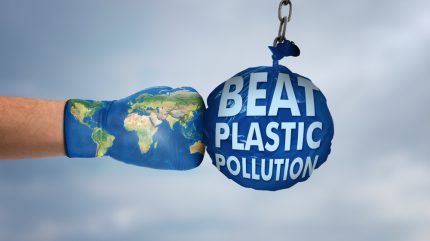
In the fast-paced world of packaging, sustainability is no longer a mere consideration; it has become an imperative. As businesses and consumers alike become increasingly aware of the environmental impact of their choices, the demand for sustainable packaging alternatives has surged.
Leading this charge is Ranpak, a company dedicated to providing innovative, eco-friendly packaging solutions.
In an exclusive interview, Ranpak’s Chief Sustainability Officer David Murgio offers valuable insights into the company’s commitment to sustainability and the transformative potential of alternatives to plastic packaging.
The environmental imperative: “Plastic is not sustainable”
“Plastic has been the go-to material for packaging for decades,” Murgio begins, “but its environmental toll is undeniable. Plastic pollution has reached alarming levels, with millions of tonnes ending up in our oceans and landfills every year.”
This stark reality has driven companies like Ranpak to seek alternatives that not only protect products but also safeguard the planet.
Murgio elaborates on the challenges of plastic: “It’s not just about the end-of-life scenario with plastic. The production process itself is highly resource-intensive and contributes significantly to carbon emissions. Simply put, plastic is not sustainable.”
How well do you really know your competitors?
Access the most comprehensive Company Profiles on the market, powered by GlobalData. Save hours of research. Gain competitive edge.

Thank you!
Your download email will arrive shortly
Not ready to buy yet? Download a free sample
We are confident about the unique quality of our Company Profiles. However, we want you to make the most beneficial decision for your business, so we offer a free sample that you can download by submitting the below form
By GlobalDataThis viewpoint reflects a growing consensus in the packaging industry that a shift away from plastic is necessary for the future.
Paper-based solutions: “A game-changer in packaging”
Ranpak has positioned itself at the forefront of this shift by championing paper-based packaging solutions. “Paper is a game-changer in packaging,” Murgio asserts. “It’s renewable, recyclable, and biodegradable, which makes it an ideal material for sustainable packaging.”
He emphasises that paper offers a viable alternative without compromising on the protection and durability needed to secure goods during transit.
Murgio continues, “What sets paper apart is its versatility. It can be moulded, cushioned, and padded to provide the same, if not better, protective qualities as plastic. And the best part? Paper can be recycled multiple times, extending its lifecycle and reducing waste.”
Ranpak’s paper-based products, such as cushioning pads and void-fill systems, are designed to replace plastic bubble wrap, foam, and air pillows.
“Our products are engineered to meet the demands of modern logistics while minimising environmental impact,” Murgio explains. “This is where we see the future of packaging heading.”
Consumer demand: “Sustainability is a key driver”
Consumer demand is playing a significant role in this transformation. “Today’s consumers are more informed and environmentally conscious than ever before,” Murgio notes. “They are demanding sustainable alternatives, and companies are starting to listen.”
He points out that the shift towards sustainable packaging is not just a trend but a fundamental change in consumer behaviour.
“Sustainability is a key driver of purchasing decisions,” Murgio adds. “Consumers are willing to pay a premium for products that align with their values, and packaging is a big part of that equation. Companies that fail to adapt risk losing market share to those that prioritise sustainability.”
Ranpak’s approach is not just about meeting current demands but also anticipating future needs.
“We’re constantly innovating to develop new materials and technologies that will further reduce our environmental footprint,” Murgio says. “Our goal is to provide solutions that are not only sustainable but also cost-effective and scalable for businesses of all sizes.”
The future of packaging: “A collaborative effort”
Looking ahead, Murgio is optimistic about the future of sustainable packaging but emphasises that it will require a collective effort.
“Transforming the packaging industry is not something any single company can achieve alone,” he states. “It’s going to take collaboration across the entire supply chain—from raw material suppliers to manufacturers, distributors, and retailers.”
He continues, “We need to work together to develop standards, share best practices, and promote the adoption of sustainable materials. At Ranpak, we’re committed to leading by example, but we also recognise the importance of partnering with others to drive meaningful change.”
Murgio also calls on policymakers to play a role in this transformation.
“Government regulations can help accelerate the shift towards sustainable packaging by incentivising eco-friendly practices and discouraging the use of harmful materials like plastic,” he argues. “The sooner we can establish a regulatory framework that supports sustainability, the better off we’ll all be.”
Ultimately, the shift towards sustainable packaging is well underway, driven by a combination of environmental necessity, consumer demand, and industry innovation.
As Murgio aptly summarises, “We have a responsibility to future generations to rethink how we package and protect goods. By embracing sustainable alternatives to plastic, we can make a positive impact on the planet and set a new standard for the packaging industry.”



